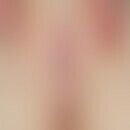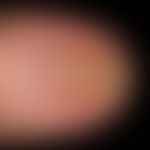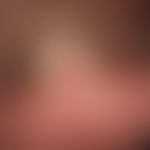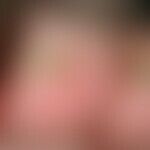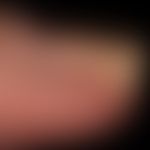Synonym(s)
HistoryThis section has been translated automatically.
Cornelius and Shelley 1968
DefinitionThis section has been translated automatically.
Excessive nail curvature in the longitudinal axis with tubular deformation of the nail plate and digging of the lateral nail edge into the nail bed. Finally, the tubular nail can be considered an advanced variant of the pincer nail (see below Pincer-nail syndrome). It can cause severe pain. Complications can include paronychia and partial resorption of the end phalanges. In all cases an osteophyte develops at the tip of the bony end phalanx.
You might also be interested in
ClassificationThis section has been translated automatically.
- Hereditary tubular nails
- Posttraumatic tubular nails (traumatic damage to the nail matrix)
- tubular nails for deformities of the end phalanx (psoriasis osteoarthopathica, hallux valgus)
- Tubular nails in the case of subungual neoplasms of the distal phalanx (usually infestation of a nail)
EtiopathogenesisThis section has been translated automatically.
Unclear, partly secondary development on the ground of exostoses, osteoarthritides or too narrow footwear. Not infrequently, the tubular nail (comparable to the pincer-nails) is associated with a Heberden's arthrosis.
TherapyThis section has been translated automatically.
General therapyThis section has been translated automatically.
Treatment with nail correction systems, such as wire or adhesive braces, can achieve a significant improvement in symptoms and even cause a permanent change in shape.
External therapyThis section has been translated automatically.
Controlled keratolysis with nail softening paste like 40% urea paste R110, R109 under occlusion. Remove the softened part of the nail every day, apply another layer of ointment and mask with plaster.
Remember! Apply 40% urea ointment only to the nails and do not apply to the surrounding tissue!
Operative therapieThis section has been translated automatically.
LiteratureThis section has been translated automatically.
- Effendy I et al (1993) Forceps nail. Conservative correction by gluing on a plastic brace. Dermatologist 44: 800-802
- El-Gammal S et al (1993) Successful conservative therapy of the pincer nail syndrome. dermatologist 44: 535-537
- Haneke E ()2013). Nail surgery. Clin Dermatol 31:516-525
- Kim KD et al (2003) Surgical pearl: Nail plate separation and splint fixation--a new noninvasive treatment for pincer nails. J Am Acad Dermatol 48: 791-792
Kim JY et al (2013) Quick and easy correction ofa
symptomatic pincer nail using a shape memory alloy device. Dermatol Surgery 39:1520-1526
Incoming links (6)
Nail, more painful; Pincers-nail; Tower nail; Unguis in turriculo; Urea paste 40% (nrf 11.30.); Urea paste (according to farber);Disclaimer
Please ask your physician for a reliable diagnosis. This website is only meant as a reference.
